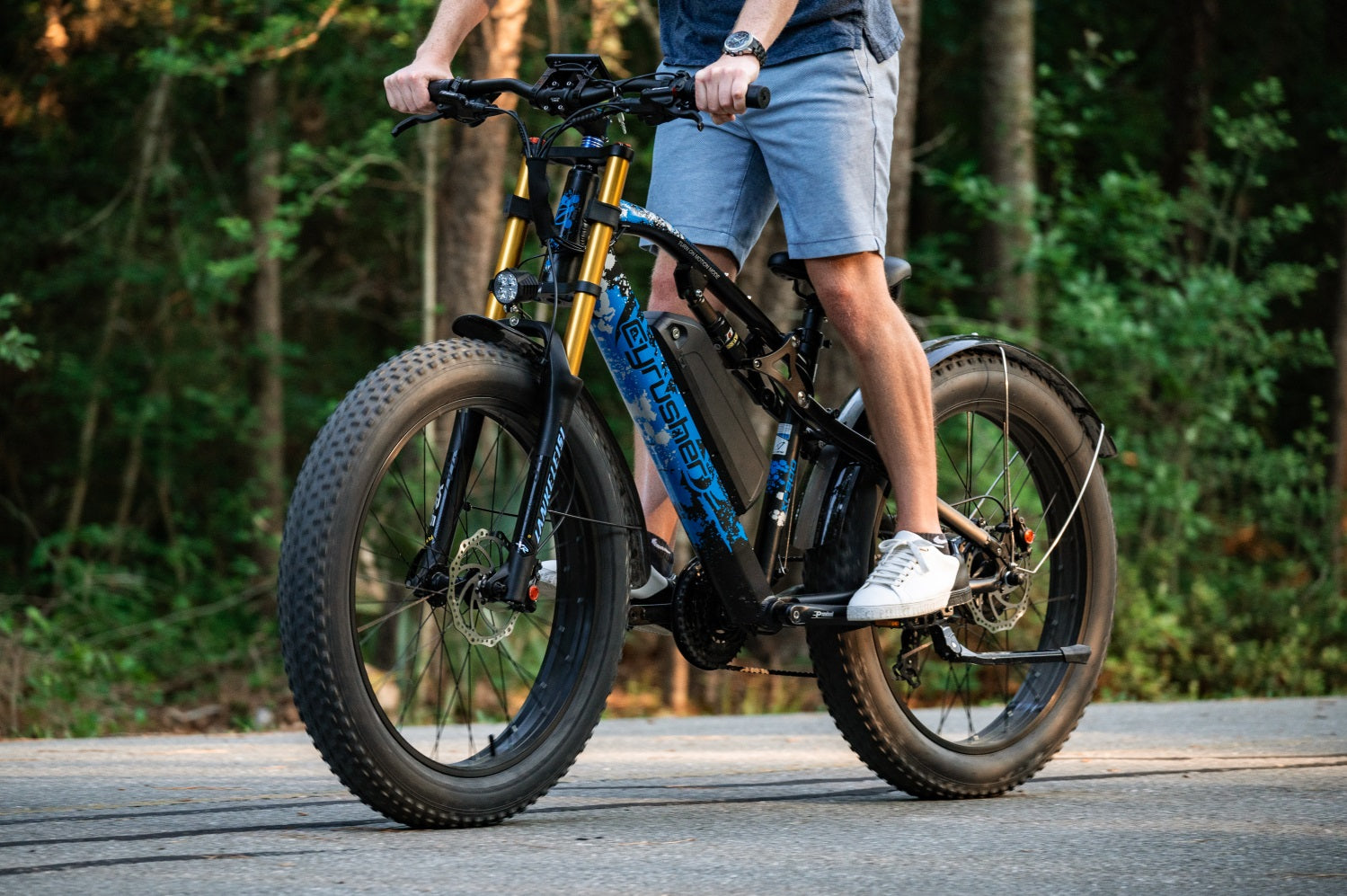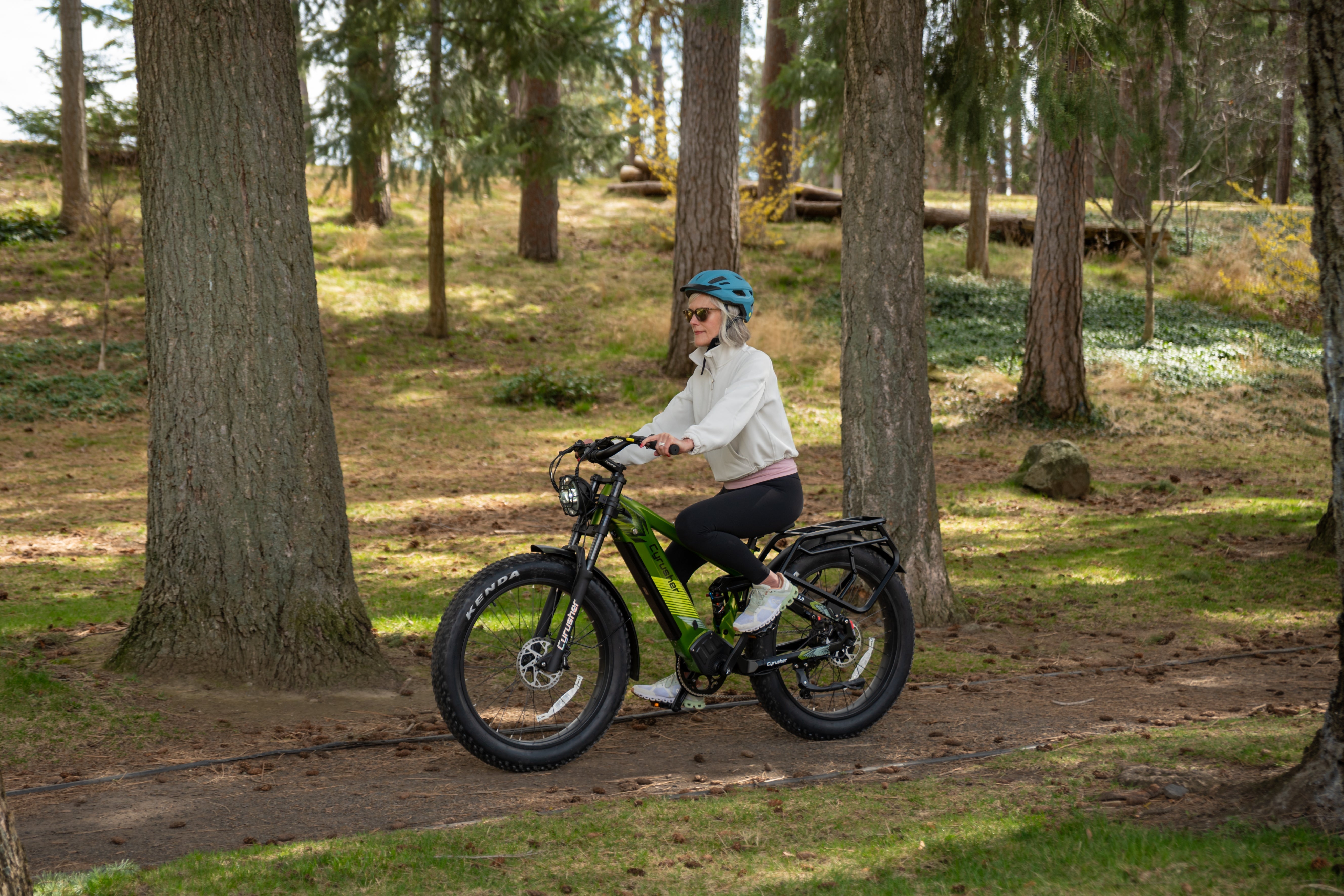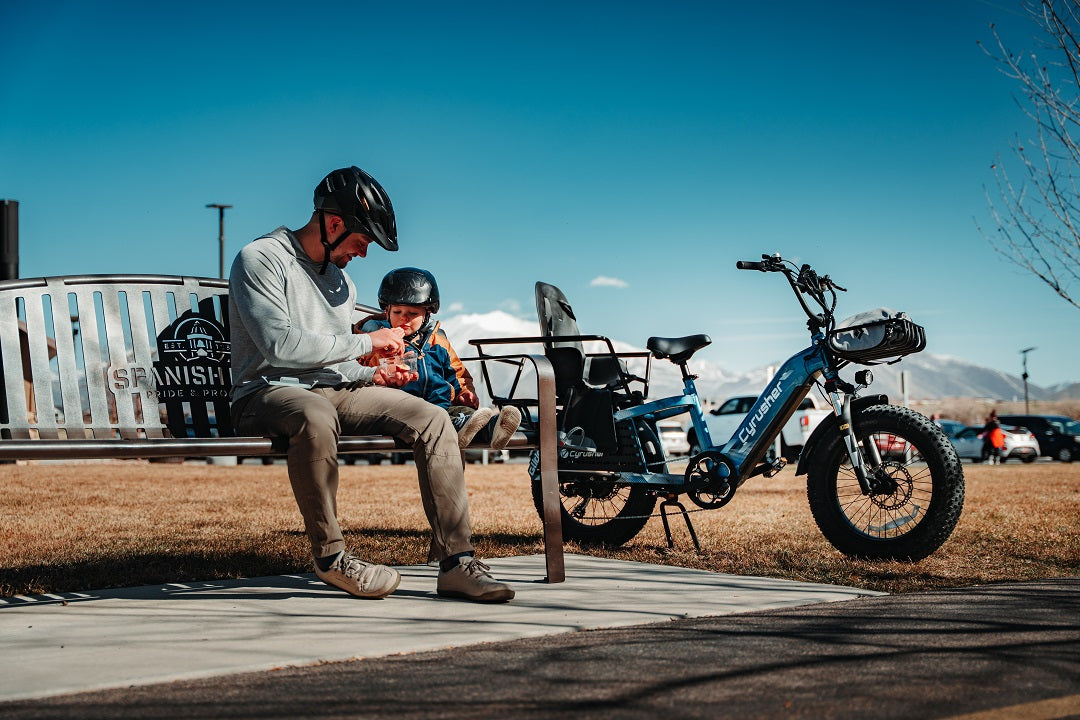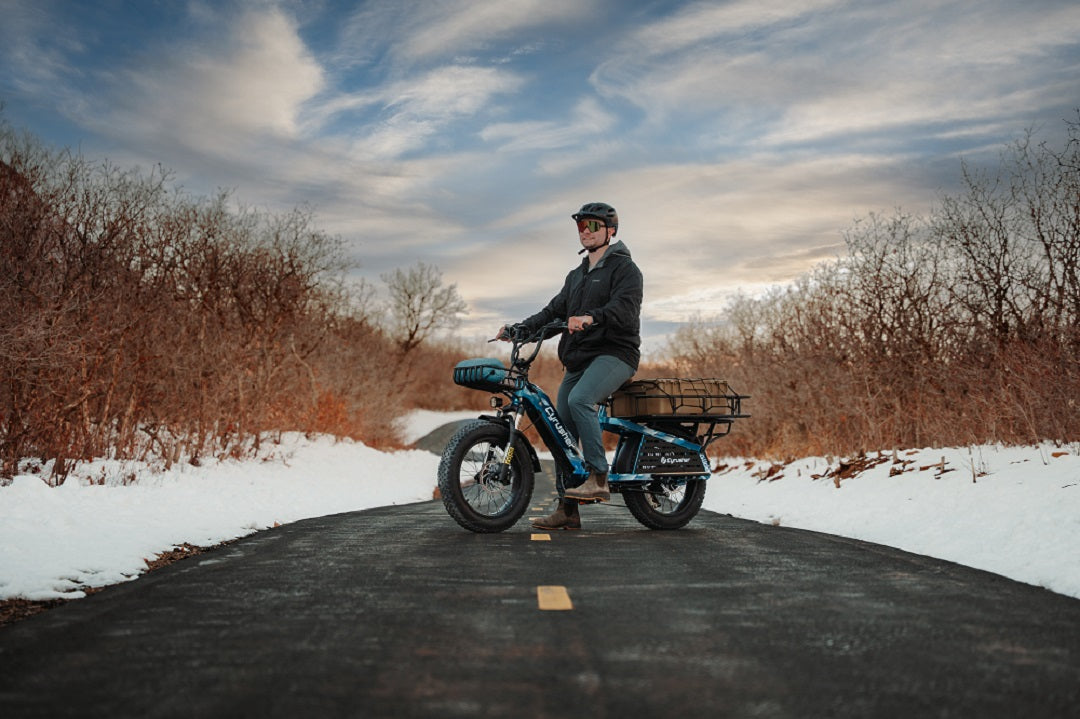In the fast-paced world of today, e-bikes have emerged as a fantastic option for not only commuting but also to engage in an effective workout routine, attracting a growing number of enthusiasts seeking a healthier lifestyle. Yet, like any other physical activity, proper muscle relaxation is the key to maximizing the benefits and minimizing post-ride soreness. This article delves into practical strategies for achieving optimal muscle relaxation after an invigorating electric bike ride.
The benefits of riding an electric bike
Electric bicycles have ushered in a revolutionary era of transportation powered by electricity. The electric assistance they provide allows riders to cover longer distances and reach higher speeds with less physical exertion. This innovation has significantly increased the appeal of cycling, inspiring a diverse range of riders seeking the thrill of the ride while achieving a satisfying level of exercise. As a consequence, the popularity of exercising with an e-bike continues to rise.

One of the key features contributing to the widespread adoption of e-bikes is the pedal assist mode. This mode allows riders to customize gears and speed settings, tailoring the level of assistance to their preferences and fitness levels. Whether you're a seasoned cyclist or just starting your fitness journey, you can choose the best gear to achieve your desired workout results in a gradual and manageable manner. Cyrusher electric bikes, for example, offer 5 PAS Modes to assist the pedaling speed. The PAS 1 mode requires more pedaling force and takes less energy to move the pedals, while the PAS 5 mode provides higher power assistance that demands less pedaling. The result is that you achieve a more intense workout when you choose the low-speed mode, while you have less fatigue when you choose the high-speed mode.
The electric support alleviates the need to exert excessive force while pedaling, particularly when compared to traditional bicycles. Consequently, this reduced strain on the rider's muscles and joints makes electric pedal bike workouts appealing, especially for those with mobility challenges or older individuals seeking to restart a workout routine. The gentler impact on joints enhances the overall experience and encourages a broader demographic to engage in cycling, promoting both physical fitness and general well-being.
In addition to the personal benefits, e-bikes contribute to a cleaner environment by reducing emissions associated with traditional vehicles. They also offer a cost-effective and efficient mode of transportation, making them a practical choice for both daily commutes and leisurely rides. Embracing electric bikes supports a healthier lifestyle and contributes to a sustainable and eco-friendly future at the same time.
Engaging in ebike exercise, like any sport, strains muscles and can lead to fatigue and soreness without proper relaxation. Despite the electric assistance, extended vigorous riding still involves an intense workout for the rider. Electric bikes engage various muscle groups, meaning that they offer an effective form of exercise. Gradually increasing intensity and incorporating breaks and warmups help manage muscle strain and enhances the e-biking experience. Balancing the exhilaration of e-biking with proper precautions ensures a fulfilling workout.
Ways to relax your body after riding an electric bike
-
The importance of effective stretching
Stretching is a vital practice for not only athletes and fitness professionals but for everyone. Regular and appropriate stretching plays a crucial role in maintaining muscle flexibility, strength and overall health. It's a critical step to relieve muscle tightness after exercise, preserve joint range of motion and prevent excessive stress on muscles during physical activities. While a single short stretch may not immediately enhance flexibility, consistent stretching noticeably relieves muscle tightness and increases joint flexibility over time.
When engaging in stretching exercises, it's essential to approach each muscle group with a gradual stretching action. Start with gentle stretches and progressively increase the intensity to achieve a thorough muscle stretch. This ensures optimal benefits and minimizes the risk of injury. Incorporating stretching into your routine doesn’t just improve physical performance, it also enhances relaxation and mental well-being.

-
Foam rolling for muscle relief
Foam rolling, known as the "Foam Axis Rolling Technique", is a highly effective method to lessen post-workout soreness and promote relaxation. This technique focuses on releasing tension in the myofascia, rather than being a general muscle relaxation massage. The choice of foam rolling tools, such as longer shafts for large muscle groups or shorter, thinner shafts/balls for targeted relief in smaller muscles, can be tailored to your specific needs.
It is advisable, especially for beginners, to start with a soft and comfortable foam shaft that is non-serrated and of moderate length. Using foam rolling before a workout enhances blood circulation, accelerates the flow of body fluids and reduces the likelihood of joint strain during physical activity. Moreover, it significantly improves muscle flexibility, thereby enhancing overall physical flexibility.

Post-workout, foam rolling helps in reducing muscle soreness quickly. Applying pressure on the muscles engaged during exercise facilitates faster nutrient transportation through improved blood flow, ultimately aiding in quicker post-exercise recovery. In short, incorporating foam rolling into your fitness routine can optimize your performance and enhance your overall well-being.
-
Heat/cold therapy for muscle relief
Heat and cold therapies are valuable methods for relieving muscle soreness resulting from high intensity exercises which cause delayed onset muscle soreness (DOMS). DOMS is linked to muscle fiber damage and principal changes within muscles due to vigorous or intermittent exercise or the introduction of new exercise routines. These activities subject the muscles to sudden and intense pressure, resulting in soreness and related conditions.
Cold therapy mitigates post-exercise fatigue by contracting muscle tissue, reducing inflammation and accelerating recovery. It is particularly beneficial for managing fatigue after intense single sessions of exercise, but it is not meant for long-term use. Cold therapy helps by decreasing blood flow and inducing muscle contraction.

Conversely, heat therapy effectively reduces inflammation by increasing local blood flow and enhancing metabolism. It encourages vasodilation and augmented blood flow, relieving muscle spasms, reducing deep tissue congestion and loosening muscle tissue to alleviate pain. However, it's essential to note that using heat therapy in the presence of soft tissue injuries or during the early stages of torsion can worsen subcutaneous congestion and swelling due to increased circulation.
In summary, cold therapy is excellent for immediate relief and is ideal after intense, one-time exercise, while heat therapy promotes inflammation dissipation by enhancing circulation and metabolism, making it suitable for muscle relaxation and pain relief. It's crucial to use each therapy appropriately based on the nature and timing of muscle soreness and consider potential contraindications for the best results.
-
Muscle relaxation massage
Muscle relaxation massage is an effective method for diminishing muscle soreness resulting from poor riding posture or overuse. The aim is to stimulate muscles, stretch joints, enhance blood circulation and, ultimately, relax the tissues. This process typically begins by using general massage techniques to soften the surface layer of muscles before applying deeper pressure to reach the inner tissue layers. The pressure is directed at tight muscles, facilitating improved blood flow. Be aware that this might cause temporary discomfort.

It is important to perform the massage correctly to avoid complications. An incorrect technique or angle could potentially damage blood vessels and lead to unwanted problems. Seeking a professional massage therapist is strongly recommended to ensure a safe and effective muscle relaxation massage, reducing the risk of injuries and providing a beneficial experience.
-
Protein intake
During an exercise session, the body consumes a certain amount of energy and requires nutrition supplementation. Protein is the essential building block for muscles and, after intense exercise, it's vital for repairing and rebuilding muscle tissues. When you work out, your muscles undergo stress and minor damage. Protein provides the amino acids needed to repair these muscle tissues, aiding their growth and recovery.
Beyond recovery, protein intake is invaluable for preserving your existing muscle mass, especially during weight loss or calorie restriction. It prevents muscle breakdown, ensuring you lose fat instead of muscle. Furthermore, protein-rich foods keep you feeling full and satisfied, assisting in weight management and maintaining a healthy body composition.
Post-workout recommended protein intake is around 0.14 to 0.23 grams per pound of body weight (0.3 to 0.5 grams per kilogram). Adjust this based on your activity level, fitness goals and body composition. You can find protein in various sources such as lean meats, eggs, dairy products and plant-based proteins or in protein supplements like whey or casein.

Conclusion
Riding an electric bike offers an effective full-body workout. However, this invigorating exercise can sometimes lead to muscle soreness as the body readjusts after a rigorous ride. Incorporating these targeted strategies into your post-electric bike workout routine can make a significant difference in managing muscle soreness and enhancing your overall exercise experience. Whether it's stretching, using aids like foam rollers or seeking professional massage therapy, finding what works best for you is key. By prioritizing post-ride relaxation, you not only ease muscle tension but also achieve a more balanced and rewarding workout routine. Embrace these practices, and let them pave the way for a healthier and happier you.










Share:
Turning the Page on Nine: Cyrusher’s Ninth Anniversary Celebration
Cyrusher Rider story: An E-Bike Journey to Health, Savings and Family Bonding